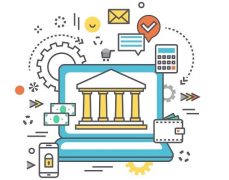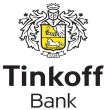Open banking – a new stage in financial inclusion
In a constantly and rapidly evolving world where open banking has already begun its transition to open finance, it seems hard to believe that there is still a considerable number of people who don’t have access to online banking services, cannot make any orders or payments via the internet, or don’t even have a bank account.

Open banking can help to tackle issues around financial inclusion
While in some parts of the world banks and clients form long-term relationships which persist even over generations, there are still a lot of people out there fitting under the qualificatives of “unbanked”, “underbanked”, and “underserved”.
Financial exclusion doesn’t affect only the developing countries. Unbanked and underbanked individuals are located across the world in both wealthy countries and undeveloped countries. According to data from the World Bank, as of 2017 — the most recent year for which figures are available — 1.7 billion people were unbanked globally.
Younger people are also more likely not to have bank accounts or to be underserved by banks than older people. Around 30% of unbanked people were between the ages of 15 and 24 in 2017.
So what is financial exclusion in the open finance era?
Financial exclusion involves the difficulty in accessing and using all those financial services necessary for the complete development of the daily life of individuals and to their full involvement in society.
Despite the impact of the phenomenon, little is known about which categories are excluded from the financial market. These are usually classified as follows:
Unbanked – individuals or organisations who don’t have any access to a bank’s or financial institution’s services.
Underbanked – individuals or organisations who have limited access to financial services and still rely on using cash in most operations, thus depriving themselves of important banking services, like using credit cards or getting loans.
Underserved – this is a term used to describe the two aforementioned categories: the unbanked and the underbanked.
Most often, underserved communities are formed of:
- People with low incomes from low and middle-income countries;
- People with low incomes or who are marginalised in high-income countries;
- Women and expats in several parts of the world;
- Micro businesses – although MSMEs constitute a high percentage of the total number of businesses in the world, financial exclusion is the main constraint keeping them from developing.
How can the underserved be helped through open banking?
The answer is simple: by creating alternative solutions that are easier to be accessed due to the involved technology. And open banking can be the long-awaited solution to financial inclusion.
Open banking is meant to generate new benefits and opportunities for economies and societies by efficiently ticking the following boxes:
- Providing access to responsible credit. Properly designed open banking products, through the use of alternative financial data, can expand access to financial insights that help increase consumers’ chances to get approved for loans and accurately assess what they can afford. Such data can include mobile bill payments, rent payments, utility bill payments, and so on.
- Encouraging informed financial behaviors. Insights provided by PFMs based on spending patterns provide a detailed view of the financial situation and the areas that may be improved, like paying too much for a service, alongside more suitable alternatives.
- Enabling participation in the global economy. Open banking is spurring economic growth and driving financial inclusion by helping millions upgrade from cash-based transactions to digital financial transactions in a secure environment.
- Supporting MSEs. Micro and small enterprises get access to affordable financial tools that address their needs including accounting and cash management. These processes become automated under open banking and easier to achieve from a technical point of view. Also, companies can now shop around and find appropriate funding sources for achieving their business goals, with so many investment apps powered by open banking.
- Supporting the contingent workforces. Freelancers have been underbanked for a long time, and with all the open banking-based opportunities, this is changing. They get access to affordable financial products and benefit from so-called nano-loans and micro-insurance, which is exactly what they’ve lacked up until now.
Open banking is getting more mature day by day, region by region. One of the greatest things about it is that it keeps financial inclusion among its top priorities.
Further development with open APIs and strategic partnerships with fintechs are keeping things moving in the right direction, and it’ll be interesting to see where open banking goes next.











































